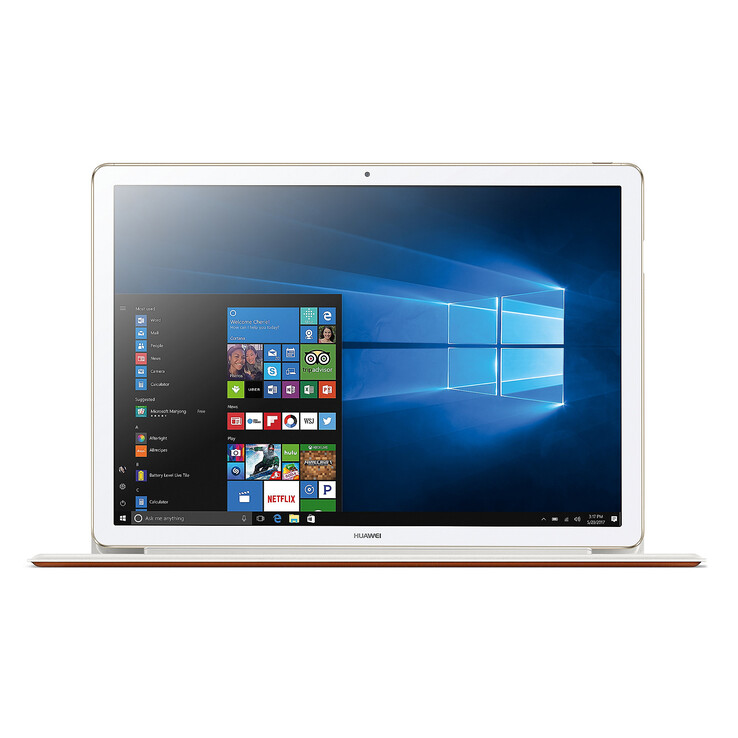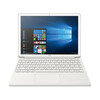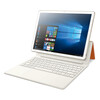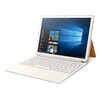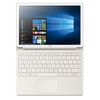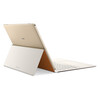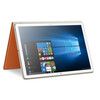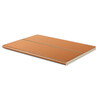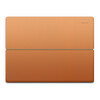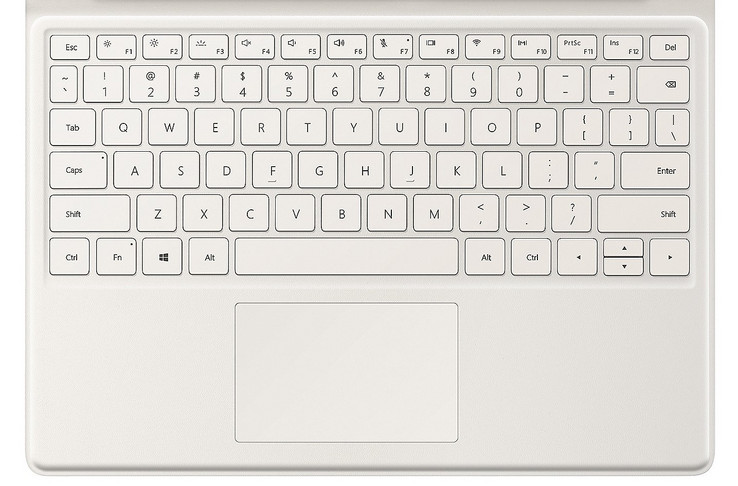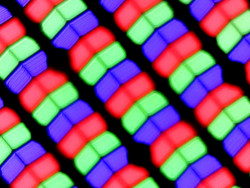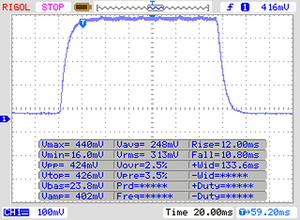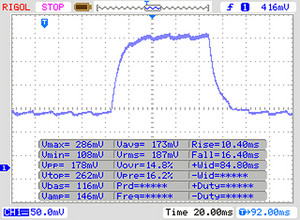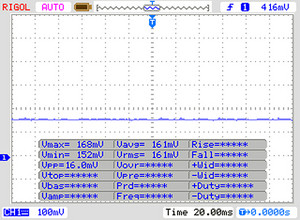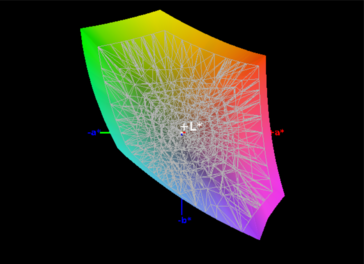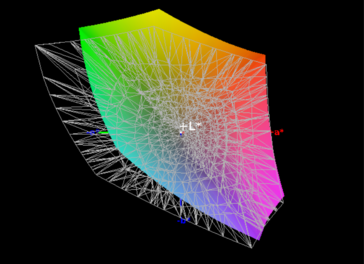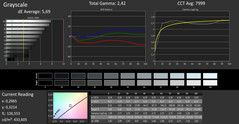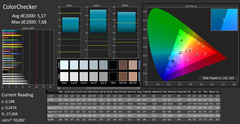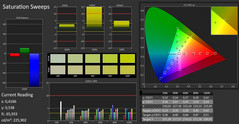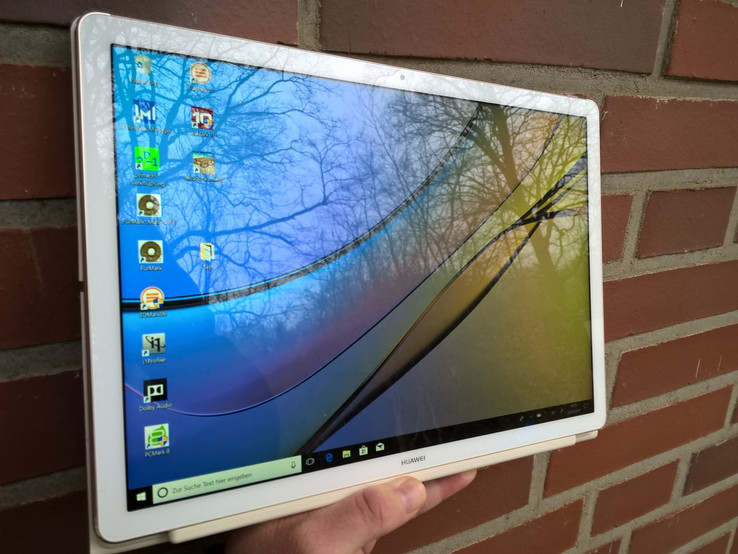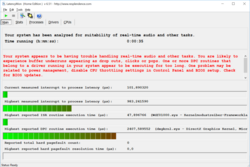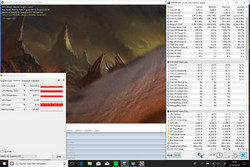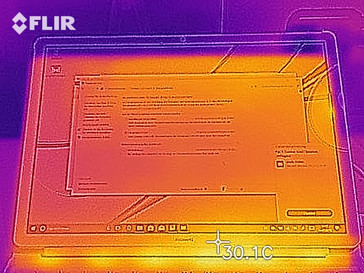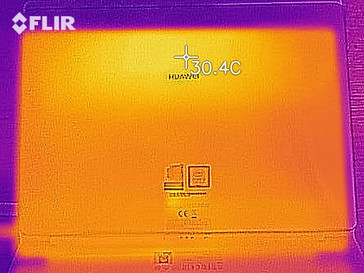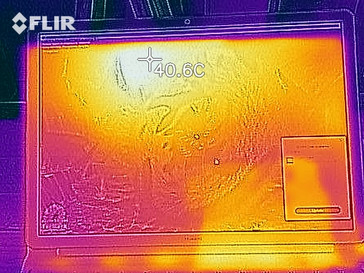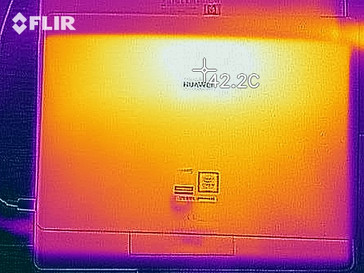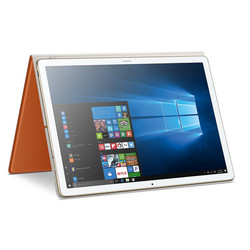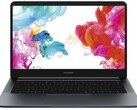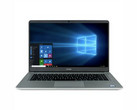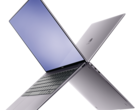Huawei MateBook E (i5-7Y54, HD615) Convertible Review

The MateBook m5-6Y54 Convertible marked Huawei’s first foray into the world of Windows devices in 2016. Huawei followed this by releasing the MateBook X and the MateBook D, which were classed as a subnotebook and a full-fledged notebook, respectively. Huawei has further expanded the MateBook series by releasing the MateBook E, a convertible which most closely related to the original MateBook. There is only a slight performance bump between the original MateBook and the MateBook E that we have in for review.
The MateBook E should be powerful enough for most daily office tasks thanks to its Intel Core i5-7Y54 processor and onboard HD Graphics 615. We will be comparing the MateBook E not only with its predecessor but also with the Asus Transformer 4 Pro, the Samsung Galaxy Book 12, the Acer Switch 5, and the Lenovo ThinkPad X1 Tablet.
Case and Equipment
Huawei has not changed its convertible visually. The MateBook E, like its predecessor, is made of an aluminum alloy, which gives the 6.9 mm thick convertible a very sturdy appearance. The detachable keyboard serves as a base and as a cover for the MateBook E. The rear of the keyboard is swathed in a brown imitation leather material while the base hinges have a gold finish that complements the brown imitation leather. The front of the keyboard is finished in white to complement the MateBook E’s white finish.
The MateBook E has few ports, with Huawei including only a single USB Type-C port in addition to the headphone jack and keyboard connection. This lack of ports can be somewhat rectified by connecting the included MateDock 2, which adds USB Type-C, USB Type-A, HDMI, and VGA connections. The MateDock 2 supports Power Delivery, which means that the MateBook E can be charged while connected to the MateDock 2.
There is no SD card reader, so we are unable to test SD card performance. Despite the MateBook E not taking full advantage of its inbuilt Intel 8265 Tri-Band Wi-Fi adapter, buyers can look forward to fast Wi-Fi connection speeds.
Connectivity
Input Devices
The detachable keyboard has soft chiclet keys that offer a soft acoustic feedback when pressed. Keys have practically no pressure point, but there is enough resistance for there to be sufficient feedback when typing. The size and the distance between the keys provides a smooth typing experience suited for long typing sessions after getting used to the keyboard. We found that the keyboard cover needs to be firm and level with the MateBook E otherwise the keyboard will twist as soon as any hand pressure is applied. The keyboard has a two-stage backlight for working in low light.
There is a touchpad integrated into the keyboard cover which acts as a mouse replacement. Unfortunately, the touchpad in our review unit is not fixed firmly in place as it audibly and visibly rattles. The surface texture could be better too, as successfully moving our fingers across the surface often felt like a conquest rather than a simple action. Fortunately, the touchpad responds in all corners and multi-touch commands can be executed accurately and easily. Mouse clicks are triggered by pressure, and while the touchpad responds well the MateBook E needs to be on a flat and firm surface for best clicking performance.
Display
The MateBook E has a 12-inch IPS display with a 2160x1440 native resolution and a 3:2 aspect ratio. Using X-Rite i1Pro 2, we measured average and maximum brightness levels at 428 cd/m² and 439 cd/m², respectively with 92% brightness uniformity. The contrast and black levels were equally impressive; we measured them at 1254:1 and at 0.35 cd/m². These strong contrast and brightness levels result in a sharp picture. Display reaction times were impressive too.
| |||||||||||||||||||||||||
Brightness Distribution: 92 %
Center on Battery: 439 cd/m²
Contrast: 1254:1 (Black: 0.35 cd/m²)
ΔE ColorChecker Calman: 5.17 | ∀{0.5-29.43 Ø4.78}
ΔE Greyscale Calman: 5.69 | ∀{0.09-98 Ø5}
100% sRGB (Argyll 1.6.3 3D)
71% AdobeRGB 1998 (Argyll 1.6.3 3D)
79.9% AdobeRGB 1998 (Argyll 3D)
99.8% sRGB (Argyll 3D)
84.9% Display P3 (Argyll 3D)
Gamma: 2.42
CCT: 7999 K
| Huawei Matebook E Chi Mei CMN7801, , 2160x1440, 12" | Huawei MateBook m5-6Y54 TMA 1200 Unknown Vendor, , 2160x1440, 12" | Asus Transformer 4 Pro (i7-7500U, HD620) BOE06EC, , 2160x1440, 12.6" | Samsung Galaxy Book 12 SM-W728 Samsung SDCA029, , 2160x1440, 12" | Acer Switch 5 SW512-52-5819 WST KL.1200w.004, , 2160x1440, 12" | Lenovo ThinkPad X1 Tablet Gen 2 LSN120QL01L01, , 2160x1440, 12" | |
|---|---|---|---|---|---|---|
| Display | -14% | -15% | -4% | -22% | ||
| Display P3 Coverage (%) | 84.9 | 65.8 -22% | 69.6 -18% | 77.3 -9% | 58.8 -31% | |
| sRGB Coverage (%) | 99.8 | 96.2 -4% | 90 -10% | 92.8 -7% | 87.5 -12% | |
| AdobeRGB 1998 Coverage (%) | 79.9 | 66.8 -16% | 65.9 -18% | 83.1 4% | 60.6 -24% | |
| Response Times | 14% | -43% | 47% | -30% | -7% | |
| Response Time Grey 50% / Grey 80% * (ms) | 26 ? | 25 ? 4% | 41 ? -58% | 4 ? 85% | 37 ? -42% | 28.4 ? -9% |
| Response Time Black / White * (ms) | 22 ? | 17 ? 23% | 28 ? -27% | 20 ? 9% | 26 ? -18% | 22.8 ? -4% |
| PWM Frequency (Hz) | 250 ? | 221.2 ? | ||||
| Screen | -31% | -2% | 103% | -21% | -12% | |
| Brightness middle (cd/m²) | 439 | 451 3% | 262 -40% | 376 -14% | 369 -16% | 388.1 -12% |
| Brightness (cd/m²) | 428 | 425 -1% | 254 -41% | 378 -12% | 331 -23% | 344 -20% |
| Brightness Distribution (%) | 92 | 80 -13% | 89 -3% | 91 -1% | 75 -18% | 78 -15% |
| Black Level * (cd/m²) | 0.35 | 0.37 -6% | 0.26 26% | 0.03 91% | 0.46 -31% | 0.39 -11% |
| Contrast (:1) | 1254 | 1219 -3% | 1008 -20% | 12533 899% | 802 -36% | 995 -21% |
| Colorchecker dE 2000 * | 5.17 | 11.04 -114% | 3.34 35% | 4.1 21% | 5.52 -7% | 4.6 11% |
| Colorchecker dE 2000 max. * | 7.68 | 14.92 -94% | 7.12 7% | 6.45 16% | 9.29 -21% | 9.1 -18% |
| Greyscale dE 2000 * | 5.69 | 10.45 -84% | 3.28 42% | 3.64 36% | 6.95 -22% | 6.1 -7% |
| Gamma | 2.42 91% | 2 110% | 2.47 89% | 2.58 85% | 2.58 85% | 2.07 106% |
| CCT | 7999 81% | 8849 73% | 7180 91% | 7113 91% | 7009 93% | 7104 91% |
| Color Space (Percent of AdobeRGB 1998) (%) | 71 | 74 4% | 59 -17% | 74 4% | 56 -21% | 59 -17% |
| Color Space (Percent of sRGB) (%) | 100 | 100 0% | 90 -10% | 93 -7% | 88 -12% | 91 -9% |
| Total Average (Program / Settings) | -10% /
-22% | -20% /
-10% | 49% /
74% | -24% /
-22% | -10% /
-11% |
* ... smaller is better
Display Response Times
| ↔ Response Time Black to White | ||
|---|---|---|
| 22 ms ... rise ↗ and fall ↘ combined | ↗ 12 ms rise | |
| ↘ 10 ms fall | ||
| The screen shows good response rates in our tests, but may be too slow for competitive gamers. In comparison, all tested devices range from 0.1 (minimum) to 240 (maximum) ms. » 47 % of all devices are better. This means that the measured response time is similar to the average of all tested devices (20.2 ms). | ||
| ↔ Response Time 50% Grey to 80% Grey | ||
| 26 ms ... rise ↗ and fall ↘ combined | ↗ 10 ms rise | |
| ↘ 16 ms fall | ||
| The screen shows relatively slow response rates in our tests and may be too slow for gamers. In comparison, all tested devices range from 0.165 (minimum) to 636 (maximum) ms. » 35 % of all devices are better. This means that the measured response time is better than the average of all tested devices (31.6 ms). | ||
Screen Flickering / PWM (Pulse-Width Modulation)
| Screen flickering / PWM not detected | |||
In comparison: 53 % of all tested devices do not use PWM to dim the display. If PWM was detected, an average of 8111 (minimum: 5 - maximum: 343500) Hz was measured. | |||
Our review unit’s display is one of the best in its class. The MateBook E has 100% sRGB color-space coverage and achieves 71% AdobeRGB color-space coverage. The MateBook E is suitable for outdoor use thanks to its bright display. While sunlight reflections cannot obscure the screen, we would still recommend using the device in the shade for ease of use. The MateBook E does not use PWM for brightness control, which is great for those with sensitive eyes.
Performance
Huawei has equipped the MateBook E with an Intel Core i5-7Y54 processor, HD Graphics 615, 4 GB RAM, and a 256 GB SSD. The convertible is powerful enough to easily complete office tasks and is even capable of simple image-editing. While the MateBook E lacks the performance for current video games, older titles on low settings should possibly be playable.
Processor
The Intel Core i5-7Y54 is a dual-core processor that is suitable for demanding applications. The CPU can be passively cooled thanks to its low 4.5 W TDP. In our Cinebench R15 multi-benchmark, our review unit scored about 10% better than the 2016 MateBook Convertible that is powered by an Intel Core m5-6Y54.
The MateBook E maintained its performance during our Cinebench R15 endurance test, only dropping around 10 points by the end of the benchmark. This equates to a performance drop of less than 5%, which is far better than comparison devices that on average experience performance drops closer to 50 points. The results from our Cinebench R15 endurance benchmark also show that the MateBook E performed better than the class average of Core i5-7Y54 devices.
System Performance
Our test device is also about 10% faster than its predecessor in the PCMark 8 benchmark. The MateBook E runs smoothly and reliably in daily use. Windows 10 is quick to boot and is snappy, as are programs such as office applications and Internet browsers.
Please see our CPU benchmark page for a more detailed look at how the Intel Core i5-7Y54 performs in other devices.
| PCMark 8 Home Score Accelerated v2 | 2979 points | |
Help | ||
Storage Devices
The built-in SanDisk SD8SN8U 256 GB SSD has good read and write speeds, but there are faster options which would have further improved the MateBook E’s system performance. Benchmark results show that in terms of read and write speeds the MateBook E trails comparison devices which are equipped with faster SSDs.
Please see our HDD/SSD benchmark page for a comparison of how the SanDisk SD8SNU performs against other hard drives.
| Huawei Matebook E SanDisk SD8SN8U256G1027 | Huawei MateBook m5-6Y54 SanDisk SD8SN8U256G1027 | Asus Transformer 4 Pro (i7-7500U, HD620) SK Hynix HFS256G39TND-N210A | Samsung Galaxy Book 12 SM-W728 Samsung SSD PM871a MZNLN256HMHQ | Average SanDisk SD8SN8U256G1027 | Average of class Convertible | |
|---|---|---|---|---|---|---|
| CrystalDiskMark 3.0 | -3% | -8% | 19% | 2% | 1073% | |
| Read Seq (MB/s) | 506 | 512 1% | 475.3 -6% | 511 1% | 495 ? -2% | 3753 ? 642% |
| Write Seq (MB/s) | 461 | 462.1 0% | 260.9 -43% | 473.7 3% | 454 ? -2% | 4028 ? 774% |
| Read 512 (MB/s) | 341.9 | 376 10% | 289.3 -15% | 443.7 30% | 349 ? 2% | 950 ? 178% |
| Write 512 (MB/s) | 294.7 | 295.2 0% | 260.7 -12% | 395.4 34% | 309 ? 5% | 1522 ? 416% |
| Read 4k (MB/s) | 32.46 | 31.83 -2% | 30.06 -7% | 40.46 25% | 34.1 ? 5% | 1382 ? 4158% |
| Write 4k (MB/s) | 65.3 | 64.5 -1% | 73.5 13% | 91.9 41% | 75.3 ? 15% | 1630 ? 2396% |
| Read 4k QD32 (MB/s) | 381.8 | 269.6 -29% | 296.8 -22% | 289.1 -24% | 330 ? -14% | 220 ? -42% |
| Write 4k QD32 (MB/s) | 184.4 | 178.2 -3% | 239.8 30% | 260.7 41% | 192 ? 4% | 292 ? 58% |
Graphics Card
Graphics are handled by the integrated Intel HD Graphics 615, the performance of which depends on the combination of CPU and RAM. In our test device, the HD Graphics 615 benefits from LPDDR3 RAM, allowing the MateBook E to score slightly higher in benchmark results than an average of comparable devices.
Please see our GPU benchmark page for a comparison of the results from other devices that are equipped with Intel Graphics 615.
| 3DMark 11 Performance | 1381 points | |
Help | ||
Gaming Performance
The MateBook E is not suitable for extensive video-game nights. Although it is possible to play a few modern games at the lowest graphics settings, typically the device will struggle to play most new games. The MateBook E will play more simple games downloadable from the Windows Store, or even older games such as BioShock Infinite.
Please see our games benchmark page for a more detailed look at which games the Intel HD Graphics 615 can run.
| low | med. | high | ultra | |
|---|---|---|---|---|
| BioShock Infinite (2013) | 41.52 | 25.08 | 20.46 | 6.67 |
Emissions and Energy
Noise Emissions
Since the MateBook E is passively cooled, there is no fan noise. We did not notice coil whine or anything similar during our tests.
Temperature
The MateBook E keeps temperatures under control thanks to its passive cooling. At idle, surface temperatures are consistent with ambient temperatures. Our test device feels warm under load, but it is never hot. Our thermal-imaging camera shows that surface temperatures reach just above 40 °C.
In our one-hour stress test, passive cooling could not prevent core temperatures from rising to 80 °C. These high temperatures cause the CPU to downclock below the base clock, stabilizing at 1.1 GHz until the end of the test. This is extreme load though, and one which rarely occurs outside of stress tests. As such, it is unlikely that the MateBook E would experience thermal performance throttling in daily use.
(+) The maximum temperature on the upper side is 36.3 °C / 97 F, compared to the average of 35.4 °C / 96 F, ranging from 19.6 to 60 °C for the class Convertible.
(+) The bottom heats up to a maximum of 37.9 °C / 100 F, compared to the average of 36.8 °C / 98 F
(+) In idle usage, the average temperature for the upper side is 24.7 °C / 76 F, compared to the device average of 30.3 °C / 87 F.
(+) The palmrests and touchpad are cooler than skin temperature with a maximum of 31.6 °C / 88.9 F and are therefore cool to the touch.
(-) The average temperature of the palmrest area of similar devices was 27.9 °C / 82.2 F (-3.7 °C / -6.7 F).
Speakers
The MateBook E has speakers which are suitable for occasional playback of audio content. The speakers are relatively quiet with an unbalanced sound. Low tones are poorly represented, while highs fall off sharply. The speakers are fine for listening from time to time, but we would recommend using an external audio source, whether that be external speakers or headphones.
Huawei Matebook E audio analysis
(-) | not very loud speakers (70.8 dB)
Bass 100 - 315 Hz
(-) | nearly no bass - on average 20.8% lower than median
(±) | linearity of bass is average (13.5% delta to prev. frequency)
Mids 400 - 2000 Hz
(±) | higher mids - on average 5.1% higher than median
(±) | linearity of mids is average (10.1% delta to prev. frequency)
Highs 2 - 16 kHz
(±) | higher highs - on average 5% higher than median
(±) | linearity of highs is average (7% delta to prev. frequency)
Overall 100 - 16.000 Hz
(±) | linearity of overall sound is average (26.2% difference to median)
Compared to same class
» 81% of all tested devices in this class were better, 4% similar, 16% worse
» The best had a delta of 6%, average was 20%, worst was 57%
Compared to all devices tested
» 80% of all tested devices were better, 4% similar, 16% worse
» The best had a delta of 4%, average was 24%, worst was 134%
Apple MacBook 12 (Early 2016) 1.1 GHz audio analysis
(+) | speakers can play relatively loud (83.6 dB)
Bass 100 - 315 Hz
(±) | reduced bass - on average 11.3% lower than median
(±) | linearity of bass is average (14.2% delta to prev. frequency)
Mids 400 - 2000 Hz
(+) | balanced mids - only 2.4% away from median
(+) | mids are linear (5.5% delta to prev. frequency)
Highs 2 - 16 kHz
(+) | balanced highs - only 2% away from median
(+) | highs are linear (4.5% delta to prev. frequency)
Overall 100 - 16.000 Hz
(+) | overall sound is linear (10.2% difference to median)
Compared to same class
» 7% of all tested devices in this class were better, 2% similar, 91% worse
» The best had a delta of 5%, average was 18%, worst was 53%
Compared to all devices tested
» 4% of all tested devices were better, 1% similar, 94% worse
» The best had a delta of 4%, average was 24%, worst was 134%
Frequency diagram in comparison (checkboxes are de/selectable)
Power Consumption
We measured the MateBook E's maximum power draw under load at almost 22 W. This means that the included 40 W USB Type-C power supply has more than enough capacity to charge the convertible even under extreme load. The MateBook E is economic when idling, sipping a maximum of 9 W and a minimum of 4 W.
| Off / Standby | |
| Idle | |
| Load |
|
Key:
min: | |
Battery Life
The MateBook E has a 33.3 Wh battery which lasted 6 h 45 m in our practical Wi-Fi test, during which we simulate the load required to render websites. While this is an improvement of two-and-a-half hours compared with its predecessor, the MateBook E lasts around half-an-hour less than the class average. More expensive competitors, such as the Lenovo ThinkPad X1 Tablet have longer runtimes thanks to their larger battery capacities, with the Lenovo's 37 Wh battery lasting more than 30 minutes longer than the MateBook E in our tests.
Pros
Cons
Verdict
The MateBook E is a performant convertible that can even handle more demanding tasks without issue. The MateBook E can be considered as a full-fledged notebook replacement thanks to its sufficient storage space and Huawei’s decision to include the keyboard cover in the box.
Huawei’s MateBook E is a powerful and stylish convertible, the combination of which is a tempting proposition.
Naturally, the gold accents and the vintage look of the keyboard cover may not appeal to everyone. Take a closer look at the MateBook E if you are looking for a device with a stylish design that does not compromise on performance.
Huawei Matebook E
- 11/13/2019 v7 (old)
Mike Wobker




